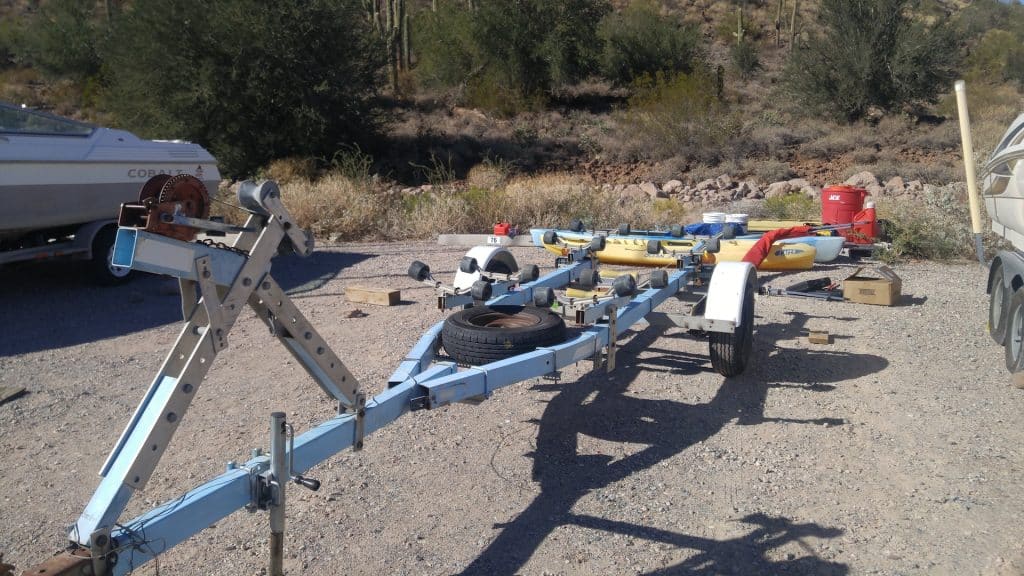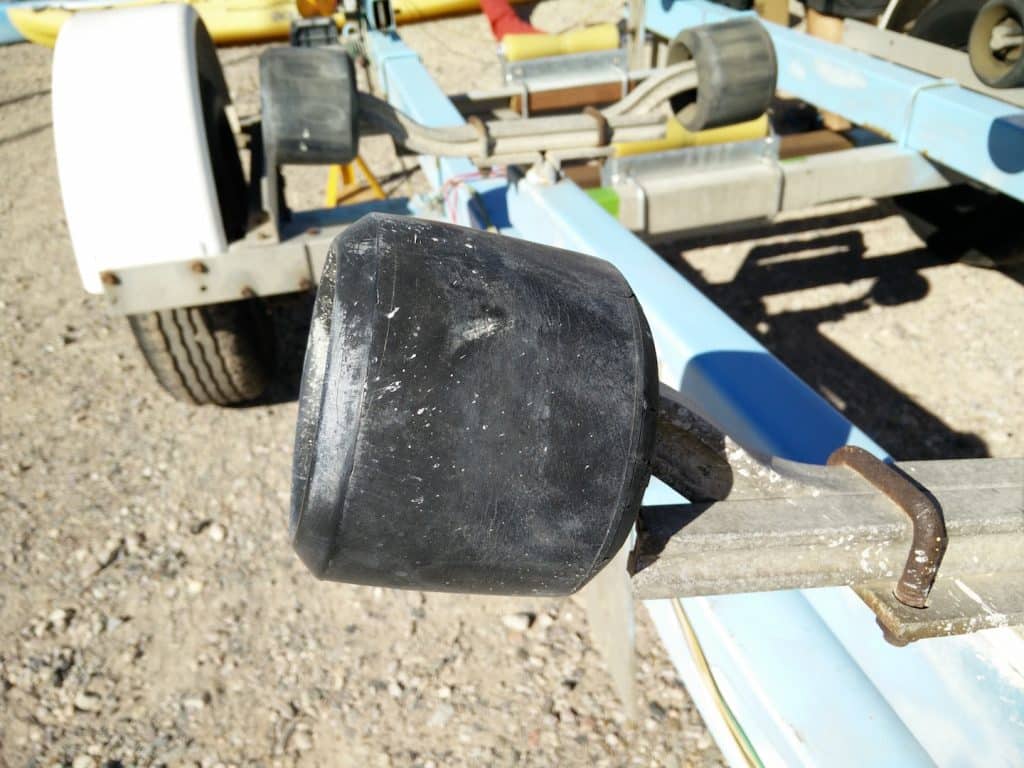- No products in the cart.
The Wobble Roller Replacement Begins
We are on a roll with work being done to my buddy Dave’s O’Day 20 sailboat, Just Enough. Today it gets literal as we tackle the wobble roller replacement project on his trailer.
As any sailor in Arizona desert will tell you, well, it’s sunny. It’s also hot–so very hot. I mean hell (literally), in the summer the street signs melt and people bake cookies on their dash while they’re at work. So needless to say, boats in dry storage take up some serious tanning.
The thing about replacing the wobble rollers is, we need to get the boat off the trailer. To get the boat off the trailer, we need to drop her in the water. If she’s in the water, we’re gonna need to go sailing.
So we’re gonna go sailing!!
Meanwhile, back in the boatyard (because we didn’t actually go sailing)… These are the particular wobble rollers we used:
The Finished Trailer
There you have it! This trailer is almost looking new with all those new wobble rollers in place. They are made of a highly engineered composite that is much more resilient to UV exposure. They might even outlast the street sign at the entrance of the boatyard.
The New Improved Bow Roller
This is the new bow roller we installed. It replaces the factory bow roller, end bells, shaft, and hardware on your boat trailer. It is designed to support the weight of your boat on the trailer, of course, but also works well absorbing road shock and vibration. The extra-wide end bells ensure that the boat does not scrape against bolts or roller bracket when you’re loading ‘er up. It is made of TPR (Thermal Plasticized Rubber) which is UV resilient, non-marking, stronger than the OEM black rubber and softer than polyurethane.







